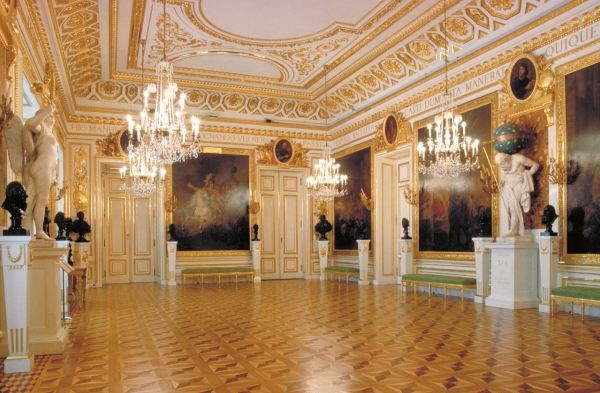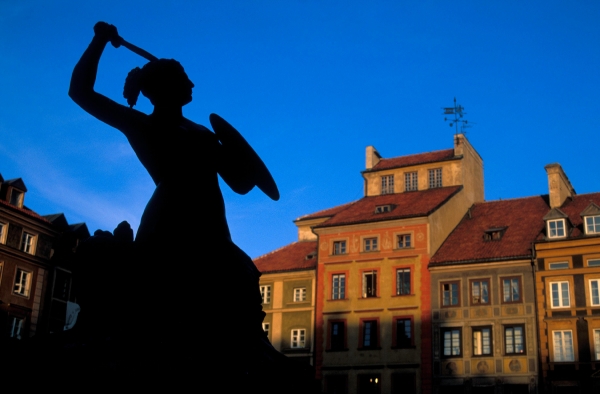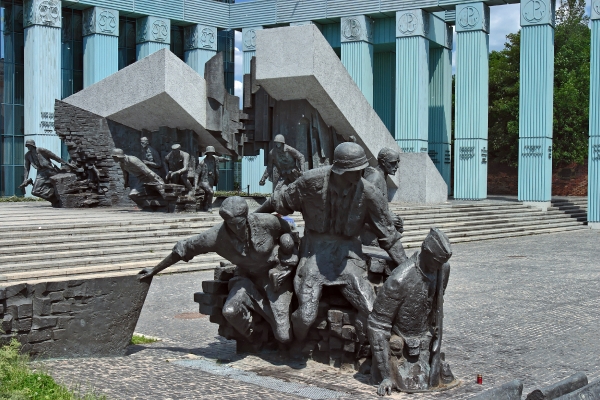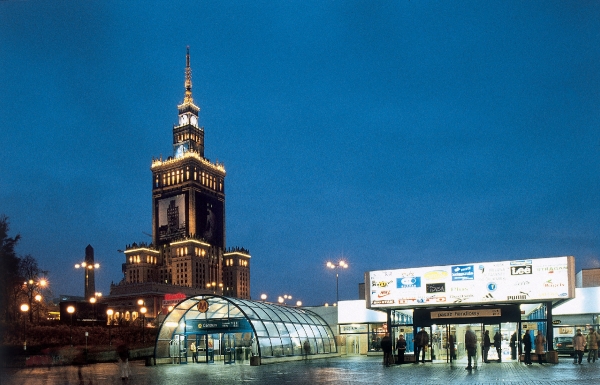What to do in Warsaw
The Old Town (Stare Miasto)
Founded in the 13th century as the prince's castle-town and a settlement surrounded by walls. During World War II 90% of it was destroyed, but thanks to its excellent restoration and recovery, it was granted the status of a UNESCO World Heritage Site. Currently, it is a lively place, bustling with life and full of galleries, cafés and restaurants.
King Zygmunt III Waza Column
The Old Town greets its visitors with the oldest and tallest non-church monument in Warsaw. It was raised in 1644 by King Władysław IV, in honour of his father Zygmunt III Waza, who moved the capital from Kraków to Warsaw. The monument is 22 metres high with the actual figure of the King measuring 275 cm.

The Royal Castle
pl. Zamkowy 4
Built in the 15th century, this castle served as seat of the king and the government in the new capital. The castle was repeatedly destroyed and renovated. Many of the valuable exhibits that were saved during World War II can today be seen in the Castle. The rest was stolen and the Castle itself blown up. It was rebuilt in the 1970s and '80s using castle remains and rubble.
Old Town Market Square
One of the most picturesque parts of the city used to be the main square of Warsaw: celebrations and markets were organised, and legal judgements were passed here. The legend says that one of the tenement houses was occupied by a Basilisk. It guarded the treasures stored in the basement and every man who tried to cross it was killed by the gaze of the Basilisk.

Monument of the Warsaw Mermaid
The mermaid has been part of Warsaw's crest since the 14th century. It is not the only mermaid in Warsaw. Another one is located on the bank of the Vistula River near Świętokrzyski Bridge and the third one near Karowa street.
The Barbican defensive walls
The remnants of Warsaw's defensive walls erected in 1548 by Giovanni Batista Venetian in the alley wall which links the Old and New Town.

Warsaw Rising Monument
It commemorates the thousands of heroes of the Warsaw Rising in 1944. The building standing next to is the Supreme Court of the Republic of Poland, which was built at the end of the 20th century and is ornamented with caryatides symbolizing virtues (faith, hope and love) and maxims of the Roman Law, both in Polish and Latin.
Krasiński Palace
pl. Krasińskich 3/5
One of the most beautiful palaces in Warsaw and Poland was built in the Baroque style (17th century). It is also called the Palace of the Republic of Poland and was formerly the seat of the supreme court. Now it is one of the seats of the National Library Behind the palace there is Krasiński Garden – one of the most beautiful urban parks in Poland.
The Royal Route
The most representative arterial route of the city connecting the former royal residences. It starts with the Royal Castle and runs towards the Łazienki Park and then further to Wilanów. The large urban complex enchants with its palaces, tenement buildings, mansions and churches.
Krakowskie Przedmieście
One of the most beautiful streets in Warsaw. Following extensive renovation the street is now a promenade with limited vehicle access. Along the pavements there are reproductions of paintings of 18th century Warsaw by Canaletto, the court painter of the last Polish king.
Church of St. Anne
ul. Krakowskie Przedmieście 68
Built in Gothic style in the second half of the century, it had been destroyed and rebuilt in different styles over the centuries. The current classicist façade conceals a rich Baroque interior. There is a viewing platform on top of the church tower.
Adam Mickiewicz Monument
The statue of Poland’s greatest poets of the Romanticism was unveiled in 1898 to celebrate the 100th anniversary of his birth. The monument was the centre of the March manifestation in 1968 when the play 'Dziady' was banned from the National Theatre on the orders of the USSR.
The Presidential Palace
ul. Krakowskie Przedmieście 46/50
The largest Warsaw palace, erected in the middle of the 17th century. From 1994 it served as the official home of the Polish President. It was the residence of Lech Wałęsa, Aleksander Kwaśniewski and Lech Kaczyński. The Palace is fronted by the monument to prince Józef Poniatowski by Bertel Thorvaldsen.
Bristol Hotel
ul. Krakowskie Przedmieście 42/44
The oldest and most luxurious hotel in Warsaw, a place for exquisite balls and parties. It has welcomed many celebrities: Józef Piłsudski, John Fitzgerald Kennedy and Robert Nixon. Wojciech Kossak had his atelier here, and Jan Kiepura often sang from the hotel balcony.
Saski Garden
The park was established on the initiative of King August II Mocny as a royal garden in 1713-1733. Opened to the public in 1720 it became one of the oldest public parks in Poland. Its highlights include numerous sculptures, a characteristic fountain, a rotunda shaped reservoir and a sundial.
Tomb of the Unknown Soldier
The tomb honours all the soldiers who lost their lives fighting for their country, located in Piłsudski Square. The monument with its 3 arcades is the only surviving part of the Saski Palace. It is always guarded by a guard of honour.

The Royal Łazienki Park
ul. Agrykoli 1
The park and palace complex at Łazienki
One of the most beautiful of this type in Europe, established in the 17th century. It is a place for many cultural and entertainment events. It features many interesting architectural monuments, the most important of which include the Palace on the Island by Domenico Merlini and Jan Christian Kamsetzer built for King Stanisław August Poniatowski – Poland’s last monarch. It served as his summer residence and was famous for the Thursday dinners. Near the Palace one can see the amphitheatre. The park includes the Myślewicki Palace, where the royal courtiers lived, the Orangery, the Guardhouses, the White House and many more. Near the Łazienki Park are the Botanic Gardens of Warsaw University.
Fryderyk Chopin Monument
The monument is one of the most recognizable symbols of Warsaw. Since 1959 every Sunday from May till September Chopin concerts have been performed here at the foot of the monument, which always draw crowds of people, regardless of the weather.
The National Museum
Al. Jerozolimskie 3
The museum holds a rich collection of exhibits from antiquity to modern times. It organizes numerous temporary exhibitions presenting art from all over the world. The Vistula-side wing is the Museum of the Polish Army presenting the history of Polish military featuring interesting outdoor exhibits.

The Palace of Culture and Science
Pl. Defilad 1
Erected in 1952-55 as a ‘gift from the Soviet people’, it is the highest building in Poland, The interior accommodates theatres, museums, a cinema and a concert hall. It is the highest viewing platform in Warsaw, on the 30th floor.
Warsaw Rising Museum
ul. Grzybowska 79
Opened on the 60th anniversary of the outbreak of the Warsaw Rising, the museum pays tribute to all those who fought and died for their country’s independence in the capital city. Housed in a former tramway power station, it is one of the most modern museum in Poland. The tower with the symbol of Fighting Poland has a viewing platform.
DOWNLOAD A BROCHURE

OLD AND NEW TOWN

TOP 10 WARSAW

CITY OF CHOPIN

CITY OF MARIA SKŁODOWSKA-CURIE
The text and brochures come from: Warsaw Tour



